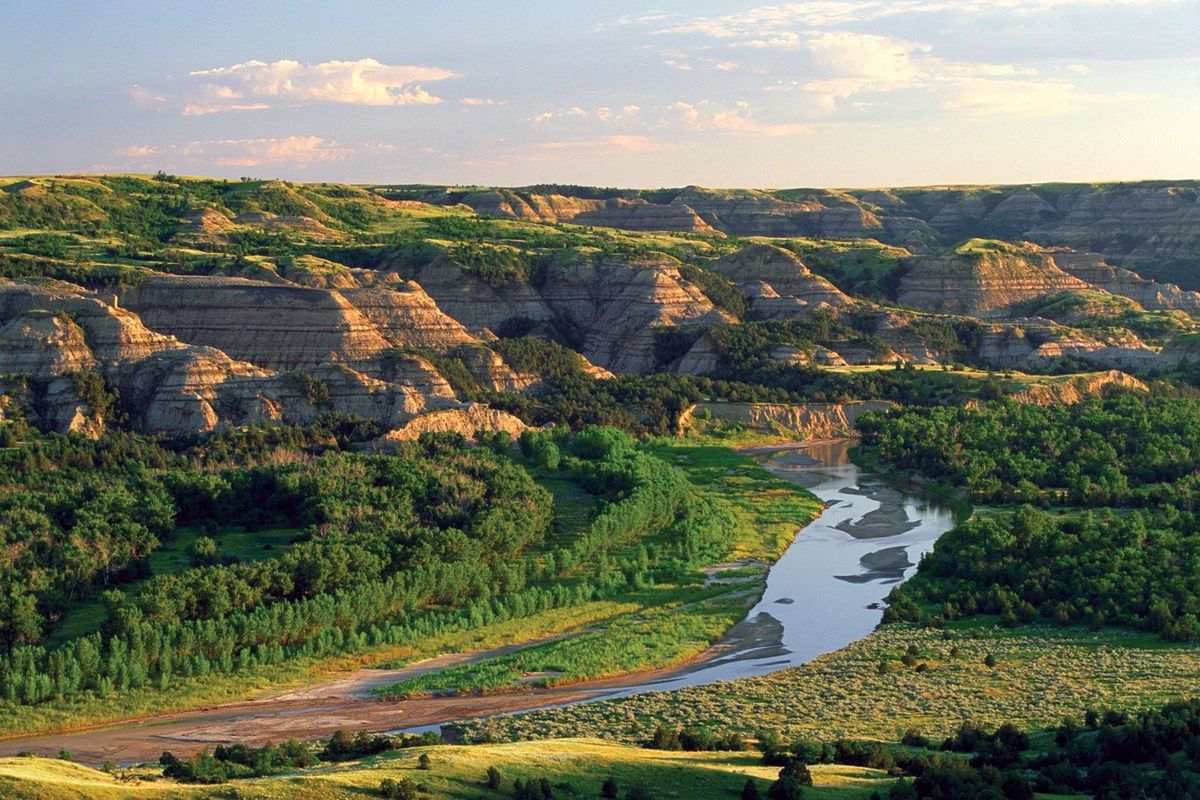Secrets Of North Dakota’s Fur Trade Path

Ever wondered about the hidden gems of North Dakota? One of the most intriguing aspects of this state is its rich history tied to the fur trade path. This route played a crucial role in shaping the region's culture and economy. Imagine traders navigating rivers, bartering with Native American tribes, and establishing trading posts that would become bustling towns. Today, you can still trace their steps, exploring historic sites and museums that bring this fascinating past to life. Whether you're a history buff or just looking for a unique adventure, North Dakota's fur trade path offers a glimpse into a bygone era.
Discovering North Dakota's Fur Trade Path
North Dakota's fur trade history is a fascinating journey through time. From bustling trading posts to serene natural landscapes, this path offers a glimpse into the past. Let's explore some key locations along this historic route.
Fort Union Trading Post
Fort Union Trading Post stands as a testament to the fur trade era. This reconstructed fort offers a peek into the lives of traders and Native American tribes.
- Visitor Center: Start at the Visitor Center to gather information and maps. Learn about the fort's history through exhibits and displays.
- Bourgeois House: Visit the Bourgeois House, where the head trader lived. It showcases period furnishings and artifacts.
- Trade House: The Trade House is where goods were exchanged. Experience reenactments and demonstrations of trading practices.
- Indian Trade Room: This room highlights the interactions between traders and Native Americans. See authentic trade items and tools.
Knife River Indian Villages
The Knife River Indian Villages offer a glimpse into the lives of the Hidatsa people. These villages were crucial to the fur trade network.
- Earthlodges: Explore reconstructed earthlodges, traditional homes of the Hidatsa. Learn about their construction and daily life.
- Visitor Center: The Visitor Center provides exhibits on Hidatsa culture and the fur trade. Watch informative films and view artifacts.
- Village Trails: Walk the trails that connect the villages. Interpretive signs explain the significance of each site.
- Sakakawea Site: Visit the Sakakawea Site, named after the famous guide. Discover her role in the fur trade and Lewis and Clark expedition.
Fort Clark Trading Post
Fort Clark Trading Post was a vital hub for fur traders and Native Americans. This site offers a rich history and beautiful scenery.
- Fort Clark Historic Site: Explore the remains of the fort and learn about its history. Interpretive panels provide context and stories.
- Mandan Village: Visit the nearby Mandan Village, where traders interacted with the Mandan people. See reconstructed lodges and artifacts.
- River Overlook: Enjoy the scenic overlook of the Missouri River. Imagine the bustling trade activities that once took place here.
- Archaeological Site: Discover ongoing archaeological work at the site. Learn about recent findings and their significance.
Pembina State Museum
The Pembina State Museum offers insights into the fur trade and early settlement of North Dakota. This museum is a treasure trove of history.
- Exhibits: Explore exhibits on the fur trade, Native American culture, and early settlers. See artifacts, photographs, and documents.
- Observation Tower: Climb the observation tower for panoramic views of the Red River Valley. Understand the geography that influenced trade routes.
- Interactive Displays: Engage with interactive displays that bring history to life. Learn about the daily lives of traders and settlers.
- Gift Shop: Visit the gift shop for books, souvenirs, and local crafts. Take home a piece of North Dakota's history.
Fort Abercrombie
Fort Abercrombie played a crucial role in protecting fur traders and settlers. This historic site offers a blend of history and nature.
- Visitor Center: Start at the Visitor Center to learn about the fort's history. Exhibits cover military life, the fur trade, and local history.
- Fort Grounds: Walk the grounds to see reconstructed buildings and fortifications. Interpretive signs provide context and stories.
- Nature Trails: Enjoy the nature trails that wind through the site. Experience the natural beauty that surrounded the fort.
- Picnic Area: Relax at the picnic area and take in the serene surroundings. Imagine the bustling activity that once filled the fort.
Conclusion
North Dakota's fur trade path is a journey through history. Each location offers unique insights into the lives of traders, Native Americans, and settlers. Explore these sites to uncover the rich heritage of the fur trade era.
Discovering North Dakota's Fur Trade Path
North Dakota's Fur Trade Path offers a unique glimpse into the past. Exploring this trail, you can see how fur traders and Native Americans lived and worked. The historic sites and museums along the way provide rich stories and artifacts. Visiting these places, you gain a deeper understanding of the region's history.
The scenic landscapes add to the experience, making the journey both educational and visually stunning. Whether you're a history buff or just love exploring new places, this path has something for everyone.
Don't miss out on the chance to walk in the footsteps of those who shaped North Dakota's history. Plan your trip, pack your bags, and get ready for an adventure that combines learning with the beauty of nature. The Fur Trade Path awaits!

